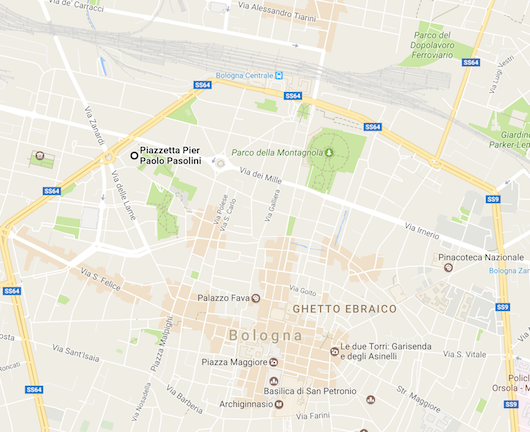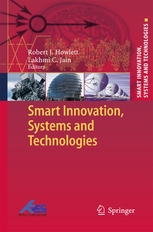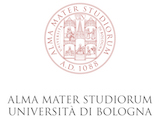The Conference Venue
The SDM17 conference is organised by the University of Bologna - School of Architecture and Engineering in Bologna, Italy. It is being held at the Laboratori delle Arti (Laboratories of Arts) that are located in Piazzetta P. P. Pasolini 5/b (or also Via Azzo Gardino 65/a) in the city centre of Bologna and a detailed description (in Italian) of the place can be found ..here..

The Alma Mater Studiorum - University of Bologna
History
The origins of the University of Bologna go way back, and it is considered to be the oldest university in the Western world, founded in 1088. Its history is intertwined with that of the great names of science and literature, it is a keystone and a point of reference for European culture.
The first recorded scholars were Pepone and Irnerio, the latter of whom was defined as "lucerna iuris". With the advice of four "doctores" thought to be their pupils, in 1158 Frederick I promulgated the Constitutio Habita, in which the University was legally declared a place where research could develop independently from any other power.
The fame of the Studium spread throughout Europe and many English scholars also came to study in Bologna. Perhaps the most famous of these was Thomas Becket. But in the following centuries Bologna was visited by other illustrious scholars and students: Pico della Mirandola and Leon Battista Alberti, who studied canonical law, and in 1506 Erasmus of Rotterdam. In the same period, Nicolaus Copernicus, a member of the Germanic nation, was completing his three years of study in Bologna. And again, Paracelso, Abrecht Dürer, San Carlo Borromeo, Torquato Tasso, Carlo Goldoni.
Legend has it that a woman taught in Bologna between the 12th and 13th centuries, Bettisia Gozzadini.
In the following centuries Pietro Pomponazzi, Ulisse Aldrovandi, Marcello Malpighi were also famous scholars at Unibo and among the most famous women teachers we may remember Laura Bassi: in 1732 she was given the chair in philosophy, and in 1776 the chair in experimental physics, teaching Logic, Metaphysics, Philosophy, Chemistry, Hydraulics, Mathematics, Mechanics, Algebra, Geometry, Ancient and Modern Languages.
In the 18th century, the University fostered scientific and technological development. In this period came the studies of Luigi Galvani who was one of the founders of modern electro-technical studies.
Following the establishment of the United Italian State came a period of great prosperity for the University of Bologna, in which the figures of Giovanni Capellini, Giosuè Carducci, Giovanni Pascoli, Augusto Righi, Federigo Enriques, Giacomo Ciamician, Augusto Murri.
In more recent times Umberto Eco (1932-2016), semiologist, philosopher, mass media expert and narrator, was a teacher and professor emeritus at the University of Bologna. He received the Sigillum Magnum, the university's most prestigious award.
Important dates
1088: the Bologna "Studium" was founded by students and for students. It is the oldest university in the Western world.
1888: the celebrations of the Eighth Centennial re-launched the role of the University of Bologna within Europe, thanks to the work of Giosuč Carducci, who in 1906 won the Nobel Prize for Literature.
1988: on 18 September in Piazza Maggiore, Bologna, the rectors of 430 universities from all the continents signed the Magna Charta Universitatum Europaeum during the nine hundredth anniversary of the University of Bologna, formally recognised as the Alma Mater of all universities. Subsequently signed by another 400 rectors, the Magna Charta affirms the autonomy of universities, the solid ties between teaching and research, rejecting any limits posed by "all geographical and political boundaries".
1999: on 19 June in the Aula Magna of the University of Bologna, 29 European Ministers of Higher Education signed the Bologna Declaration, establishing a European Higher Education Area. This was the start of a reform process known as the Bologna Process, committing the signatory countries to a project to restructure the university systems with a view to convergence, ending in 2010.
Facts and Figures
84.744: the students who have chosen the University of Bologna (A.Y. 2014/15), making it the most popular university in Italy. Teaching and extra-curricular activities take place in 1.086.134,88 m2 of space in the campuses of Bologna, Cesena, Forli, Ravenna and Rimini.
11,000: (average) number of research products, 220 patents, 47 funded research projects (H2020), 9 SIR projects (Scientific Independence of Young Researcher), 7 Inter-departmental Centres for Industrial research (CIRI).
33: the Departments of the University of Bologna.
11: the Schools of the University of Bologna.
12: the Research and Training Centre.
The city of Bologna
Bologna is the lively, historic capital of the Emilia-Romagna region, in northern Italy. The first settlements of Bologna date back to at least 1000 BC. The city was an urban centre, first under the Etruscans (Velzna/Felsina) and the Celts (Bona), then under the Romans (Bononia).
During the Middle Ages it became a free municipality, being for one century the fifth largest European city based on population.
Nowadays Bologna is a lively cultural and artistic centre. Its importance in terms of landmarks can be attributed to a varied mixture of monuments and architectural examples (medieval towers, antique buildings, churches etc.), as well as works of art, which are the result of a first class architectural and artistic history. The well-preserved historical centre (one of the largest in Italy), maintains the original medieval layout.
A famous feature of the city is the longest "portico" system in the world: 38 km of arcades located in the historical centre long the streets. Piazza Maggiore, the main square, is a sprawling plaza lined with these typical arched colonnades, cafes and medieval and Renaissance structures, such as City Hall, the Neptune Fountain and the Basilica of San Petronio. Among several medieval towers spread in the city is the highest Asinelli Tower, which is open for climbs, and the nearby leaning Garisenda, which are considered the symbols of the city.
Bologna is also a major transportation crossroad for the roads and trains of Northern - Central Italy and a significant city for trades and fairs. Especially it is the centre of an important industrial district: many mechanical, electronic, furniture, food and fashion industries have their headquarters and production plants in the region Emilia-Romagna. In particular the territory of Bologna is named "Packaging valley" because of the presence of several packaging machinery companies, such as GD and IMA and "Motors valley" for the worldwide famous production of sports cars and motorbikes of the prestigious brands Ferrari, Lamborghini, Maserati, Pagani, Ducati, whose manufacturing plants are all located around Bologna.




